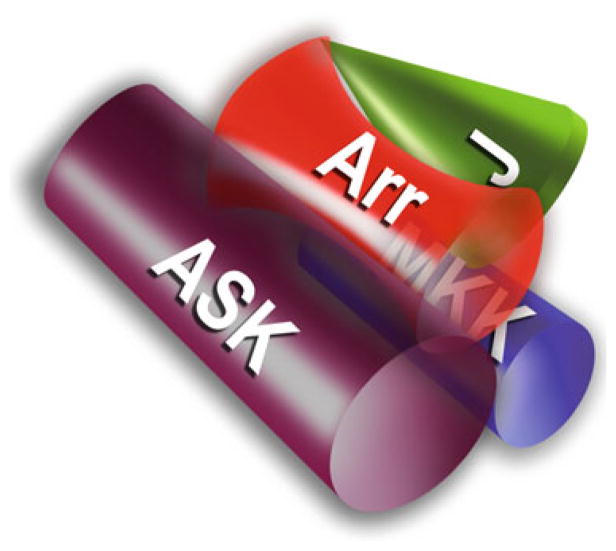Fig. 1.
The arrangement of the three kinases on arrestin scaffold. MAPK activation modules consist of MAPKKK, MAPKK, and MAPK. The model shown is based on several lines of evidence. First, each of the three kinases in ASK1–MKK4–JNK3 and c-Raf1–MEK1–ERK2 signaling modules was shown to bind both arrestin domains (Song et al. 2009). Second, many purified kinases, such as JNK3 and MKK4 (Zhan et al. 2011b), MKK7 (Zhan et al. 2013), JNK1 and JNK2 (Kook et al. 2013), as well as MEK1 and ERK2 (Coffa et al. 2011a), were shown to bind arrestins directly. Receptor binding-deficient arrestin-3 mutant with 7-residue deletion in the inter-domain hinge facilitates ASK1-dependent JNK3 activation at least as efficiently as WT arrestin-3 (Song et al. 2009; Breitman et al. 2012), whereas arrestin-3-3A mutant with enhanced receptor binding (Celver et al. 2002) does not promote JNK3 activation (Breitman et al. 2012). Therefore, the model shows that not only receptor-bound but free arrestins can also scaffold MAP kinase cascades. Arr, arrestin scaffold; ASK, ASK1 (or any MAPKKK); MKK, MKK4/7 (or any MAPKK); J, JNK1/2/3 (or any MAPK)

